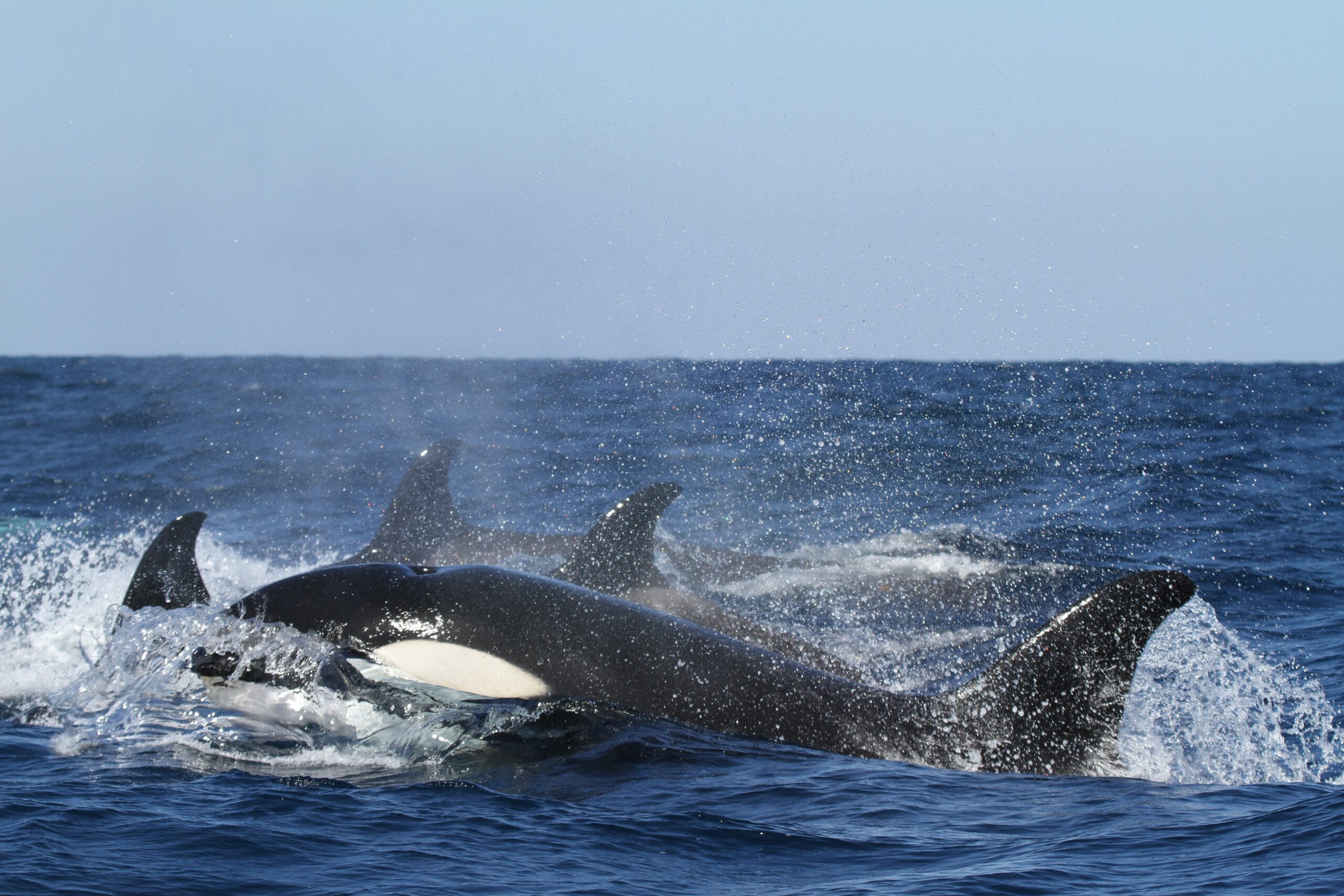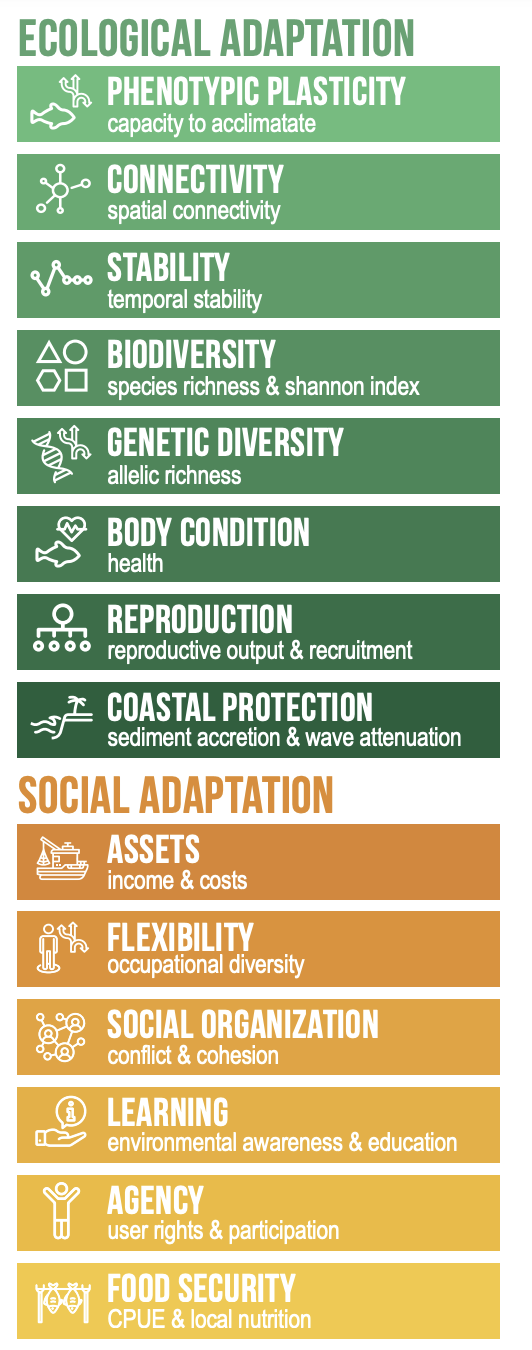The Contribution of Marine Protected Areas to Climate Change Adaptation: State of the Evidence and Policy Recommendations

Introduction
Following UNFCCC COP26, nations adopted the Glasgow Climate Pact. This aims to turn the 2020s into a decade of climate action and support.
There is a risk to overfocus on solutions for climate change mitigation and adaptation that can appear as potential “low-hanging fruits” while their true benefits have not yet been properly assessed. In this regard, marine protected areas (MPAs) are increasingly being advocated as ocean-based climate solutions, but if and how much MPAs can effectively contribute to mitigation and adaptation has remained controversial so far.
This article is an abridged version of the original text, which can be downloaded from the right-hand column. Please access the original text for more detail, research purposes, full references, or to quote text.
Key Messages
- MPAs can contribute to climate adaptation by benefiting ecosystems and people.
- The level of protection matters for MPAs adaptation benefits.
- Involving local communities in MPA designation and management is key.
- Opportunities exist throughout UNFCCC processes to better recognize the climate benefits that MPAs can provide, including decisions made in Sharm El-Sheikh.
- In Sharm El-Sheikh, Parties should urge for an ambitious outcome of Biodiversity COP15.
Methodology
To address this knowledge gap, a systematic literature review of 22,403 publications, spanning 241 MPAs across the ocean, was conducted to assess the state of the evidence on the contribution of MPAs to both climate change mitigation and adaptation. This brief focuses on the results for adaptation, which is a core topic of COP27.
In order to address these questions, the factors that the literature considered as key for ecological and social adaptation were identified (hereafter “adaptation pathways”, see Figure 1). The effect of MPAs on each of these adaptation pathways was then quantified.

Ecological and Social Benefits of MPAs for Adaptation
A better mechanistic understanding is needed on how MPAs contribute to climate change adaptation, including on how key design and management features of MPAs can influence their contribution to adaptation.
The contribution of MPAs to ecological adaptation
In comparison to unprotected sites, MPAs contribute to ecological adaptation by increasing biodiversity, reproductive output and coastal protection.
- Increased species richness provides a higher level of “insurance” for an ecosystem to adapt to changing conditions. The review found that species richness (e.g., the number of species) was higher in MPAs than in unprotected sites.
- MPAs were found to have a strong positive effect on the reproductive output of marine organisms. Reproductive output refers to the capacity of organisms to multiply. It is key for adaptation because it contributes to the capacity of populations to recover from climatic stressors.
- The literature synthesis found that, when compared to degraded habitats, well-preserved mangroves and tidal marshes enhanced coastal protection through higher rates of soil accretion (e.g., the building and stabilization of soil on the coast). Coral reefs and seagrass can also contribute to coastal protection through wave attenuation. However, it is likely that protected habitats would perform better than degraded habitats.
The remaining pathways contributing to ecological adaptation were either not affected by MPAs or lacked data to assess MPAs’ effect. In particular, the ability of MPAs to enhance connectivity constitutes a major knowledge gap.
The contribution of MPAs to social adaptation
The review notably found positive effects of MPAs to adaptation through food security, assets, environmental awareness, participation, and alternative livelihoods (i.e., five out of the six investigated pathways).
- MPAs were found to significantly increase food security, measured using catch per unit effort (CPUE). This result is backed-up by the observed increase in fishers’ income in the presence of a fully protected area.
- The other most positive social adaptive outcomes of MPAs were increases in environmental awareness (95% of cases), participation (57% of cases), and alternative livelihoods (48% of cases).
The review, however, found negative effects of MPAs on social organization (through increased conflicts) as well as on some aspects of agency (through decreased user-rights) and of assets (through increased fishing costs). But MPAs were also found to increase social cohesion (56% of cases). The fact that MPAs can produce such contrasting effects on social adaptation depending on their protection level and their governance, calls for greater attention on the processes chosen to design and implement them.
MPA Protection Level, Size and Age Matter for Climate Adaptation Benefits
In global policy circles, and at national levels too, quantitative goals have been set or are under discussion to further expand protected areas on land and in the ocean. One unintended effect of such global area-based conservation targets is the race to designate protected areas, even in places with relatively low significance for biodiversity and climate, or with weak protection levels or a weak implementation.
- Across all three pathways for which sufficient data was available (biodiversity, catch per unit effort (CPUE) and income), adaptation benefits can arise from fully or highly protected areas (but only in the presence of a fully protected area for the later).
- All three adaptation pathways were positively correlated with MPA age. This is explained by the time required for exploited fish stocks to rebuild and subsequently benefit adjacent fisheries.
- CPUE was positively correlated with MPA size.
The level of protection, age and size have already been established as important drivers and enabling conditions for MPAs to deliver ecological benefits. The review results show that this is also the case for climate mitigation and adaptation benefits.
Inclusivity, rights and justice as social adaptation
The review also found that in some cases MPAs could have negative impacts on social organization. This suggests that how MPAs are governed is a fundamental factor in determining whether MPAs will enhance or impede social adaptation. The support of local stakeholders is an enabling condition of effective MPAs.
The role of Indigenous Peoples and Local Communities (IPLCs) in the management of MPAs remains however understudied in the literature. How their leadership can be more supported, with their free, prior, and informed consent, in the establishment and management of MPAs, should be further explored with IPLCs in both scientific and policy circles.
Action points going forwards
The climate benefits of marine biodiversity conservation are increasingly recognised by policy circles, for both mitigation and adaptation. The scientific review summarised in this brief clearly demonstrates that MPAs can contribute to both mitigation and adaptation. COP27 has implementation at its heart, and this evidence shows that now is the time to accelerate action and better leverage the potential of MPAs in climate change adaptation strategies (with co-benefits for mitigation).
It is imperative to:
- Further include MPAs throughout on-going processes on adaptation at the UNFCCC.
- Include MPAs as part of National Adaptation Plans (NAPs) and Nationally Determined Contributions (NDCs).
- Consider MPAs as ecosystem-based options for the adaptation of coastal cities.
- Increase the share of finance dedicated to MPAs for climate benefits.
Parties should call for an ambitious outcome of COP15 in CP and CMA cover decisions, as key to achieving the goals of the UNFCCC on both mitigation and adaptation.
To explore the brief’s recommendations for COP27, also relevant for future COPs, please see pages 5-6.
Suggested Citation:
Rankovic, A., Jacquemont, J., Claudet, J., Lecerf, M., Picourt., L. (2022). The Contribution of Marine Protected Areas to Climate Change Adaptation: State of the Evidence and Policy Recommendations. Ocean & Climate Platform. https://ocean-climate.org/en/policy-brief-the-contribution-of-marine-protected-areas-to-climate-change-adaptation-state-of-the-evidence-and-policy-recommendations/.
Related resources
- Ecosystem-based adaptation in marine, terrestrial and coastal regions
- Designing Effective Locally Managed Areas in Tropical Marine Environments
- Community governance to conserve moor water as an adaptation measure in Ecuador
- SOLUTIONS IN FOCUS: Ecosystem-Based Adaptation from Mountains to Oceans
- Community-based coastal conservation and development initiatives to build social-ecological resilience to climate change
- Adapting Coastal Cities and Territories to Sea Level Rise in North America
(0) Comments
There is no content